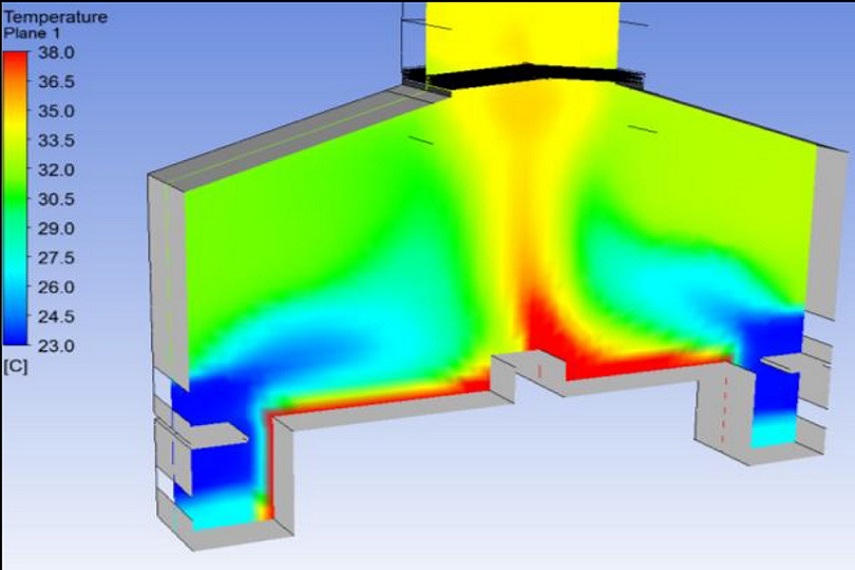Computational Fluid Dynamics Analysis (CFD)
General Description
Computational fluid dynamics involves the discretization of the solution domain into finite volumes (control volumes) and the subsequent solving of the Navier-Stokes (conservation of momentum), conservation of mass and conservation of energy equations. In addition, in this case, the buoyancy forces are also being considered.
IMPORTANT NOTE: CFD analysis takes the complexity out of flow analysis and can be a regular part of your design process, reducting the need of costly prototypes, eliminatingrework and delays and saving time and development costs.
CFD Analysis for Ventilator VG
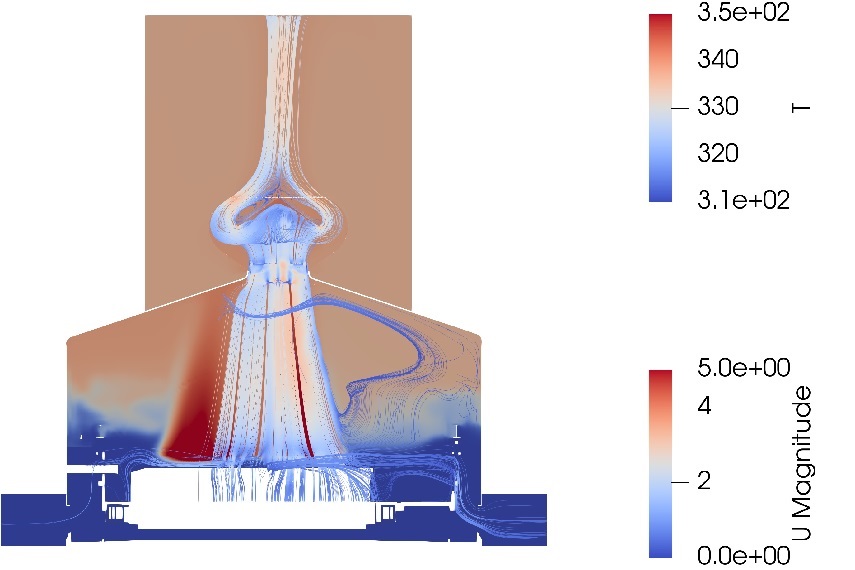
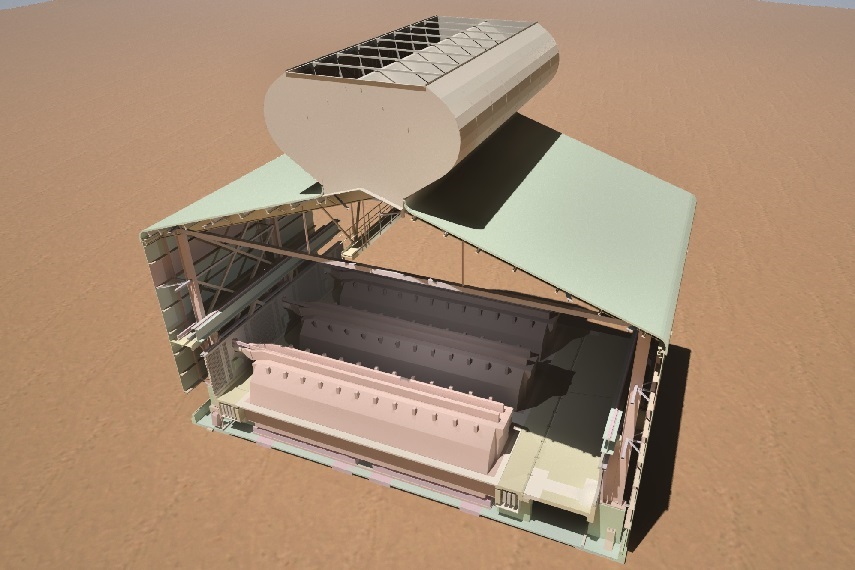
The comparison between Ventilators VG and Low profile Ventilators shows, in general, that the thermal behavior and the pressure are similar between two models of ventilators if the throats of the vents have the same freea area.
Ventilator VG generates a higher and more uniform air velocity than the low profile ventilators after the air has passed trough the ventilator.
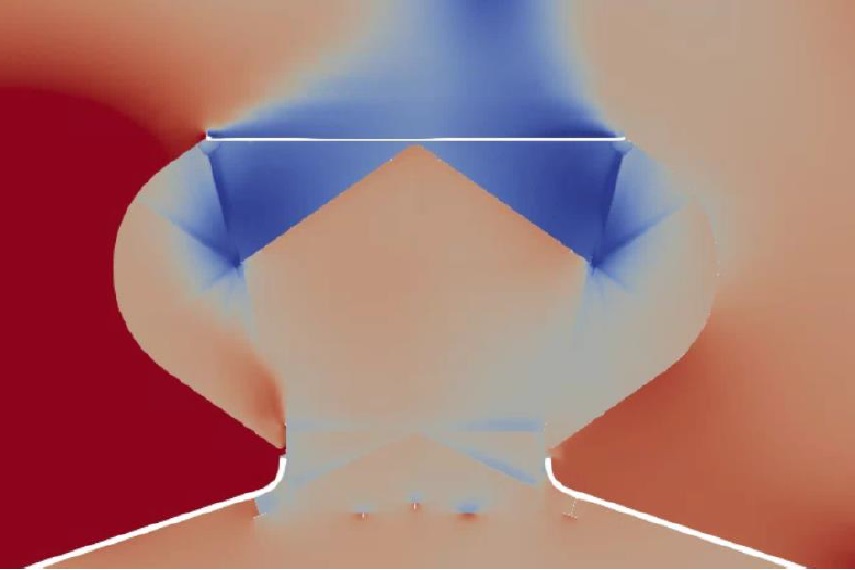
CFD Analysis for Low Profile Ventilator

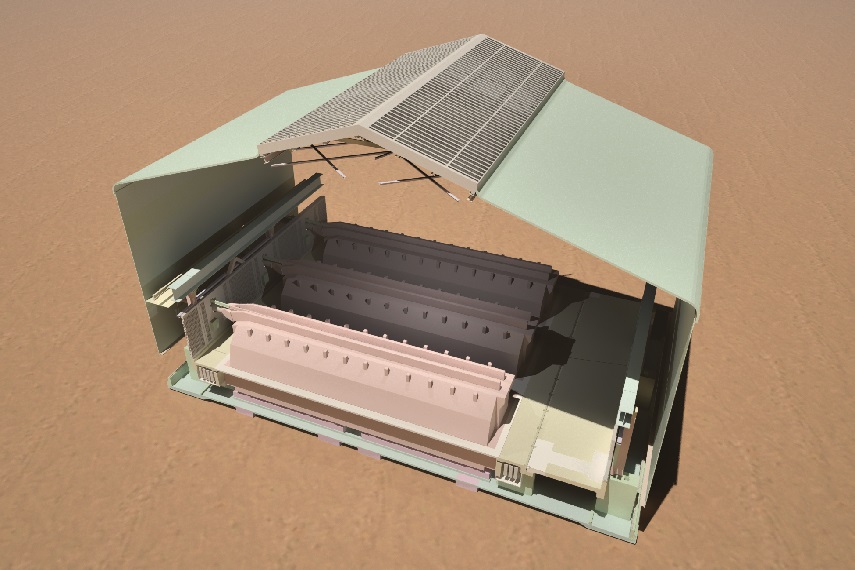
The veentilators keep rain and snow from entering the facility while allowing hot air to exit from the top of the roof structure.
The objective of the CFD analysis is to detrmine buoyant air flow characteristics of the ventilator and establish whether the ventilator meets the design requirements (building temperature rise).
